How To Grow Asparagus From Roots – Planting The Roots Deep
Once the planting bed is free from weeds, Asparagus roots should be planted 15-18 inches apart from one another, around 6-10 inches deep in alkaline, well-drained soil.
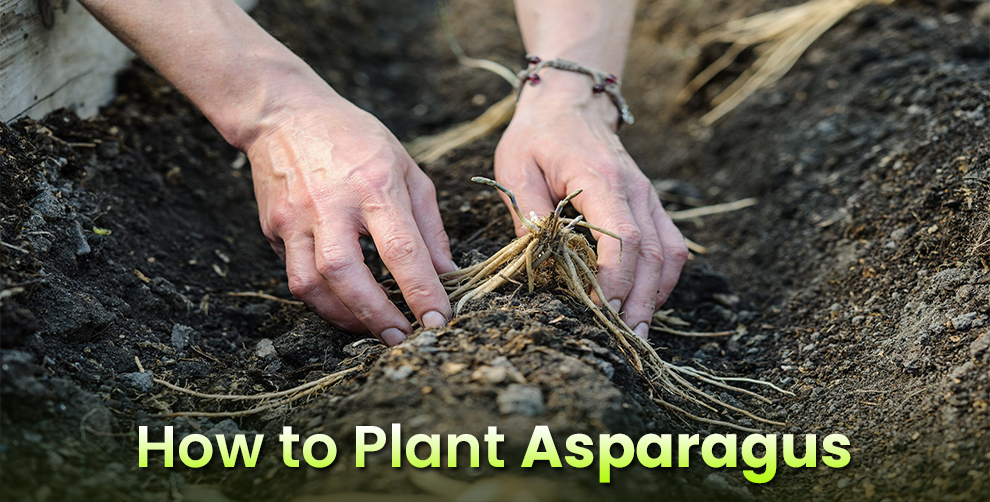
To have a continuous supply of fresh and crunchy asparagus, making them a part of your kitchen garden is a great idea. However, before you decide, please remember that even if you offer the most top-notch care, an Asparagus bed might not hit its stride for years together.
But, whenever that happens, the bed will yield multiple spears every spring for a minimum of two to three decades. However, that will only happen if you know how to plant Asparagus roots. What is the process? Well, to give you a gist we can say that before planting the roots, prepare the plant bed by removing all the weeds. Once that’s done, plant the roots around 6–10 inches deep in well-drained alkaline soil.
Should Asparagus Roots Be Soaked Before Planting?

Yes, you should soak asparagus roots in water before planting. See, typically when you shop for Asparagus plants from a nursery or online, you will receive them as a package comprising one-year-old crowns with bare roots. Every crown will have a tender but long root system.
So, do you plant the roots straightaway or do some pre-treatment? After examining the planting site and removing all the grass and weeds you are good to go with the planting process.
Now, carefully separate the asparagus crowns from the bundle and drench the bare roots in water. Soaking for a minimum of 15 minutes or a maximum of thirty minutes before planting suffices.
It is mandatory to ensure that the plant is well-hydrated before you insert them into the ground. Experienced gardeners recommend soaking the Asparagus in manure tea or nutrient-rich organic compost for best results.
How To Grow Asparagus From Roots?
Here are the steps to grow Asparagus from roots. You should follow these tips to the T to ensure your Asparagus establishes well.
Step 1 – Acquire Crowns
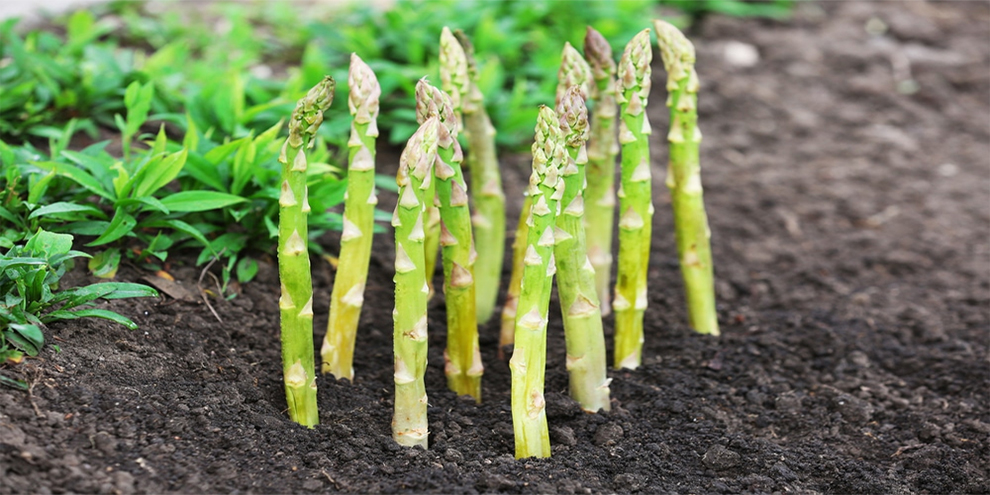
Head to any nursery or an agricultural store, and shop for a few dormant Asparagus crowns. We recommend buying them at the spring’s onset. A delay might result in them sprouting.
But, if, for any reason, you fail to purchase the crowns at the spring onset, you should look out for nurseries that have dormant crowns in their coolers. Shopping for them online is also a safe alternative, provided you buy only from a trusted source.
You can find several varieties in crowns. So, depending on your preference, you can shop for male or/and female plants. If you intend to shop for an Asparagus that gives you maximum spears, opt for all-male hybrids like the Jersey Giant. They are immensely productive compared to the other Asparagus types and are very disease and pest-resistant.
Step 2 – Prepare the planting area or the garden bed.
Mathematically speaking, you can host a maximum of ten crowns in the 4X8 footbed. It is ample to feed a maximum of four to five people. Here is a detailed guide on preparing the garden bed or the planting area:
Tip 1 – Ensure that the soil is alkaline and well-draining
Firstly, perform a soil assessment and ensure that the garden soil is alkaline. If not, add a thick layer of compost and mulch and blend well. These are both organic and do a brilliant job of neutralizing the soil.
In addition, it also works well to better soil quality and amplifies plant growth. However, if you are worried about long-term fertility, you can include soil enhancements like plant foods, aged manure, wood ashes, and organic/ dedicated asparagus fertilizers.
Tip 2 – Eliminate all the vegetable debris from the area
Before planting, ensure the ground is ready to host the Asparagus crowns. Handpick any growing weeds because that results in them competing for resources and prevents root growth.
Tip 3 – Loosen the soil
Rigorously till the soil for ten to fifteen inches horizontally underneath to promote good aeration. It helps the Asparagus crowns develop well in the soil with no hard clumps of impacted soil.
Tip 4 – Dig trenches
Ideally, how do you plant Asparagus roots deep? Simple – dig trenches. The trenches must be 6-8 inches deep and about twelve inches wide. However, if you are hoping to dig more than one trench, there should be ample space between the two, at least three feet.
Tip 5 – Formulate a rich soil mix for the mounds
Once you have dug the trenches, you can make a soil mix for the mounds. Of course, you do not have to insert your Asparagus crown now, but preparation is pivotal.
For the mixture, you can add some organic vegetable fertilizer into the soil to make up for the deficiencies. It also helps to include some added nourishment with a good potassium content to boost mount quality.
Once done, set these nutrient-rich mounds in the trenches, ensuring they are six inches high and two feet apart.
Step 3 – Plant the crowns.
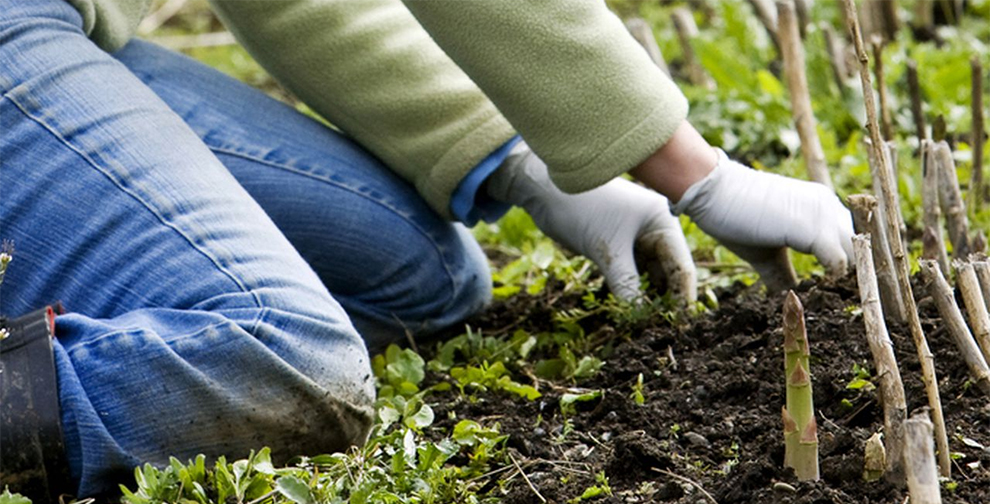
Now, you can plant the crowns. But, before you plant them, it helps to soak them in water for half hour. Next, place the crowns on the mounds within the trenches, carefully spreading their roots evenly.
Take a good look and see if there is a proper distance between the crowns. Ideally, there should be about a fifteen-inch gap from the crown’s root tip to the root tip.
Once done, cover them with two inches of soil, ensuring no space between the mounds. Since you are watering the crowns for the first time, water them deeply.
Step 4 – Ensure the Asparagus plant establishes well.
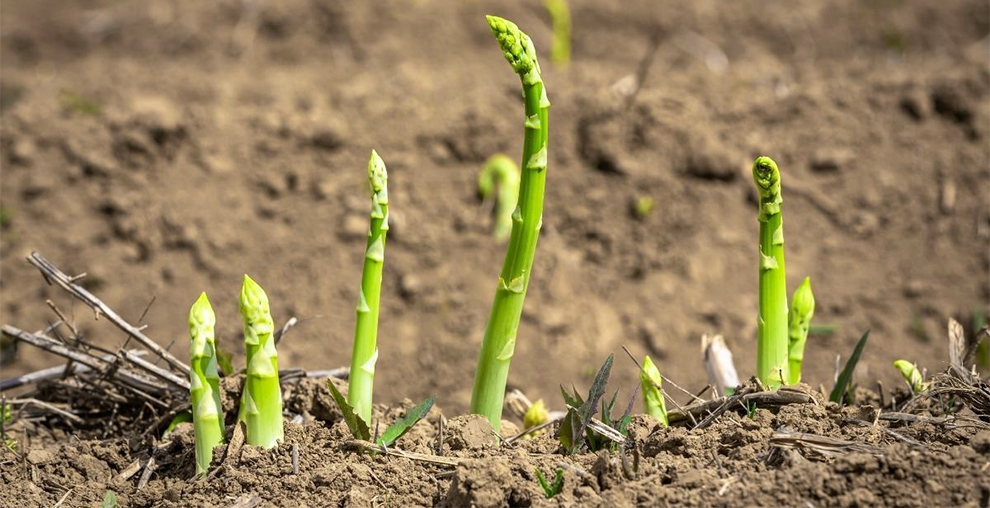
Over time, you must continually make an effort to ensure the plant establishes itself. So, when you see tall (approximately two to three inches) spears sprouting from the soil, add some enriched soil to the spears and bury them again. However, do not submerge them in the soil.
When you again note some growth in the spears, repeat the addition of mulch and enriched soil. Do this on a loop till the trench is at the ground level. Ensure there is no waterlogging around the newly developing spears. If you see water collecting around them, you must immediately alter the soil, ensuring an improvement in soil drainage.
Across the first year of planting, keep adding mulch around the plant. Also, ensure that the soil is moist but not soggy. Further, never harvest them during the growing period or establishment stage. Harvesting asparagus should happen only in the plant’s second year.
If you ensure good asparagus care and maintenance, the Asparagus will develop a solid root system and sustain for an extended period. Always remember, Asparagus does the best in rich soil. So, add aged manure, compost, fertilizers, and plant food at regular intervals.
How Deep Do You Plant Asparagus Roots?
Every plant should be grown at an appropriate depth. If you plant the seeds a little too shallow, they will rot before they can even sprout. The same holds for the Asparagus crown. Thus, you must plant them at an apt depth to ensure they have access to the necessary resources to form a healthy, robust root system.
So, what should you do?
It is best to plant the Asparagus one foot underneath the soil. If you tend to grow the crowns too shallowly, they will be unable to grow the root. It also increases susceptibility to improper conditions, resulting in root rot, which may kill the plant eventually.
How Far Apart To Plant Asparagus Roots?
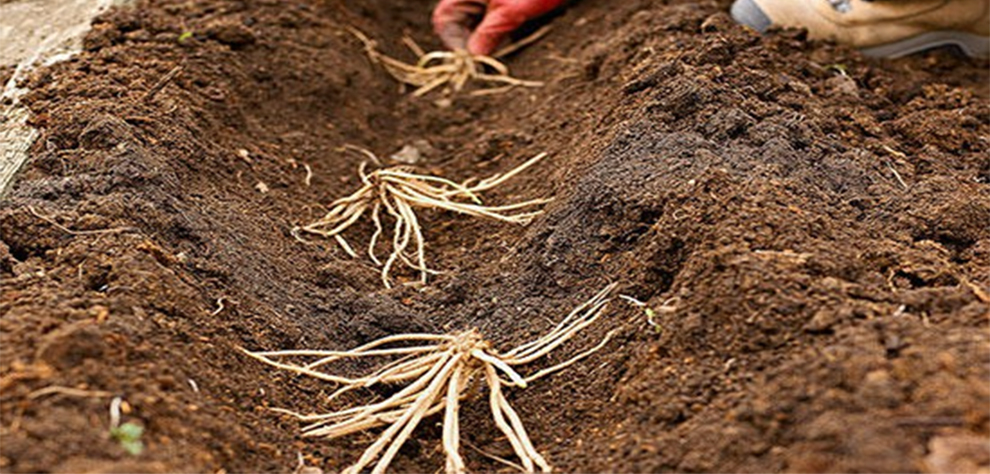
Before planting, dig a trench about six to eight inches wide and deep. There should be a four to six feet gap between the two trenches. The deeper you plant the Asparagus spears, the larger the Asparagus spears.
Backfill the hole with two inches of Espoma Plant-tone and loose soil. Next, water the trench well. Now, you can set the Asparagus roots into the ground, ensuring a 15 to 18-inch gap between them.
Carefully mound the soil under every plant, confirming the crown is slightly above the root. Spread the roots, ensuring they radiate from the shoots like spokes on a wagon wheel.
Lastly, envelope the roots with at least two inches of soil. Tighten the soil, and hold it together. Water it well.
When Should You Plant Asparagus Roots?
We hope now you know how to plant Asparagus roots. The next question that may be hovering in your head must be when should one plant the roots? So, ideally, you must plant the Asparagus crowns as soon as the soil is ready. It is usually at the onset of spring. Most gardeners time their plantation at the same time as potatoes.
Typically, people grow Asparagus from the crowns or one-year-old plants. However, some prefer growing asparagus from seeds, which is more time-consuming. You save one year of tedious weeding when you start from the crown. Hence, opting for the crown method also equals faster production.
Some varieties, like hybrid Sweet Purple or open-pollinated Purple Passion, are best grown from seeds. So, you can sow the seeds indoors in spring and then grow them outdoors after the last spring frost ends. Typically, it is when the seeds turn 12-14 weeks old.
Before sowing, you should soak the seeds in water for at least a day and then sow them in seed-starting soil or moistened peat in peat cups or flats. After the plant is 12 inches or a little taller, take them outdoors. It helps them become robust.
Post the last spring frost, transplant these young plants in a makeshift garden bed. In the fall, the Asparagus matures. Now, examine carefully, remove the less-productive female plants and identify the berry-less male plants. Lastly, transplant them into the permanent planting site.
How Many Asparagus Roots To Plant Together?
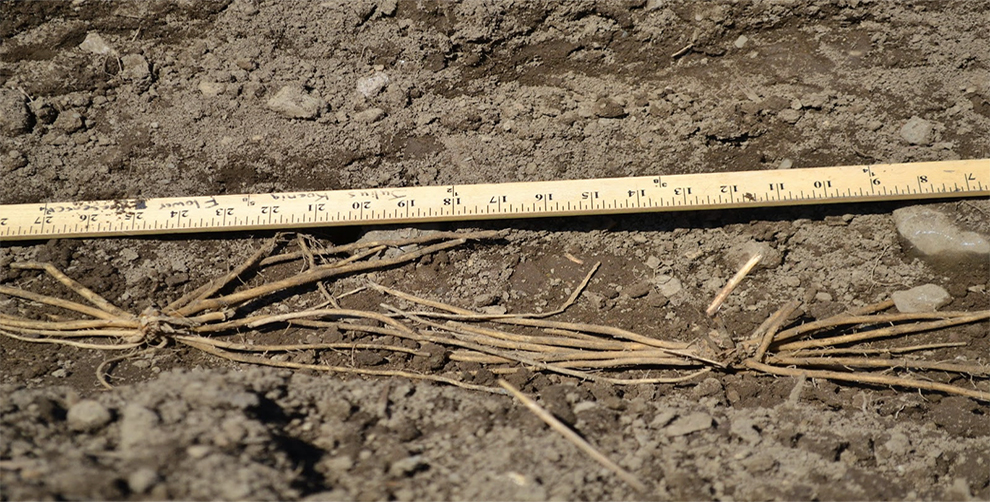
Asparagus is one of the tricky vegetables to grow, but people still choose to plant asparagus for its delicious taste. If you know how to plant Asparagus roots, follow the instructions to T and ensure proper care and attention, the plant can brighten your garden with fresh spears for over fifteen seasons.
Every plant yields approximately half a pound of Asparagus spears every year during the harvest season. So, the University of California recommends planting around five to twenty plants for every person. But, it primarily depends on how you intend to enjoy the vegetable.
Related: Asparagus Fern Care Indoors | Asparagus Lifespan
Frequently Asked Questions
Ques 1. How long does it take to grow Asparagus from roots?
Ans. As stated above, the newly planted Asparagus usually takes two to three years to yield. Hence, patience is essential because Asparagus can produce for many decades once the plant matures.
Once Asparagus matures after planting, it sends up new spears every few days for weeks together in spring. In early summer and spring, the plant yields ½ pound of spears for every foot in the row, making it worth the wait.
Ques 2. How to store Asparagus roots?
Ans. If you intend to store the Asparagus roots only for a week or two, you can put them in a refrigerator in the same packaging in which you received the crown shipment.
But, if you intend to reserve them for several weeks or even longer, you will have to store them in the sand. Some people even consider keeping their Asparagus roots in sphagnum peat moss.
